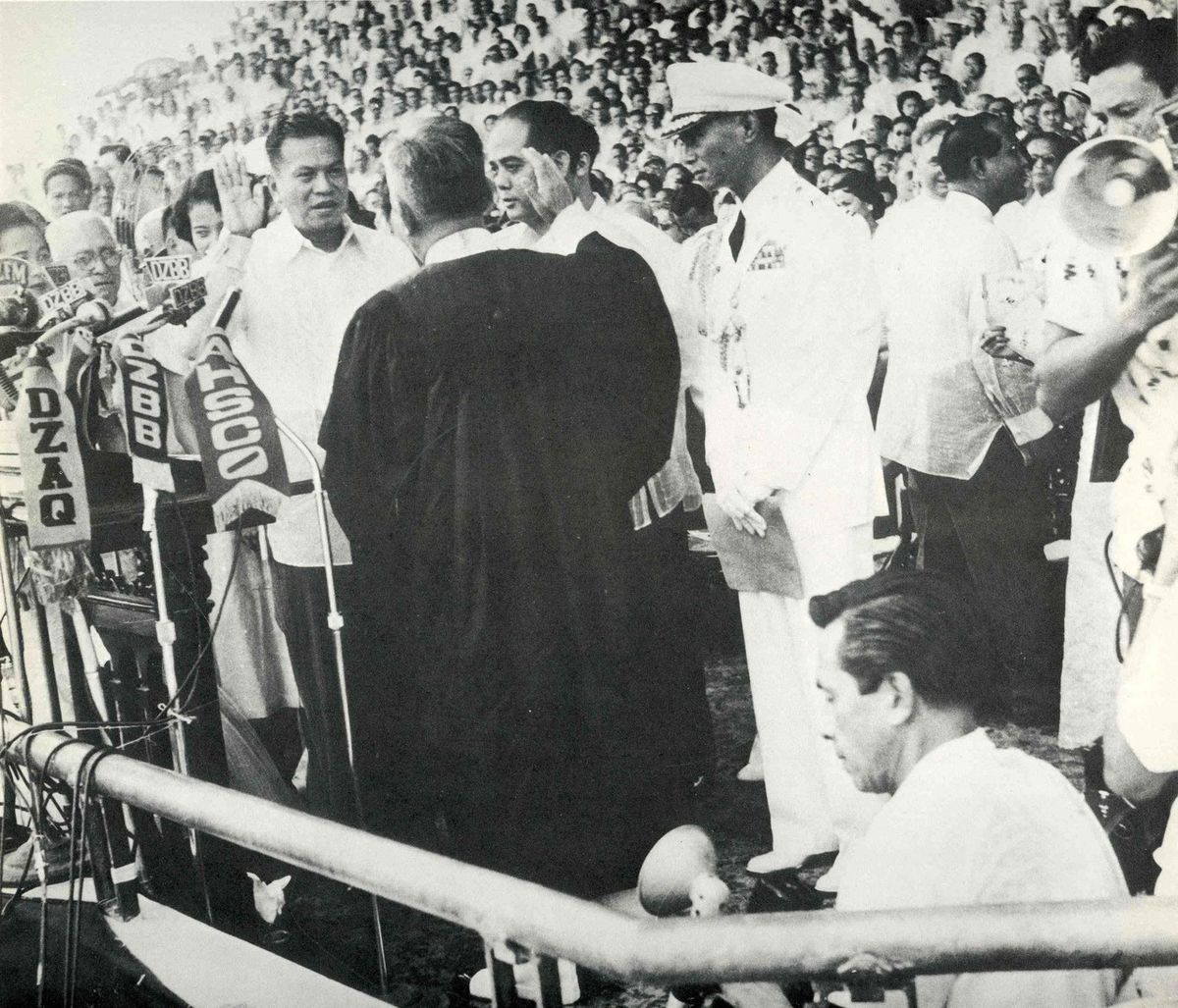

President Ramon Magsaysay’s inauguration on December 30, 1953. Photo from Wikipedia
On November 10, 1953, Ramon Magsaysay was elected as the seventh president of the Philippines. The former National Defense secretary defeated his previous boss, President Elpidio Quirino.
Ramon Magsaysay received a sizeable majority of the presidential votes. He was from Zambales province and was only 45 years old.
President Magsaysay was born on August 31, 1907. His parents were not wealthy but were solid middle class.
Subscribe to our daily newsletter
He was a college dropout but was self-taught and eager to learn new things. He possessed a gift of the common touch. He could speak and listen to the needs of the poor landless farm workers in the Philippines. He was commonly called a “man of the people.”
During World War II, he served in an anti-Japanese guerrilla unit in Zambales. After the war, he was appointed by senior American officers as the military governor of Zambales. Shortly, he was elected to the Philippine House of Representatives.
During President Quirino’s administration, there was significant concern by Filipinos and Americans that the Hukbalahap communist insurgency in Central Luzon was growing and strengthening.
ADVERTISEMENTThe Central Intelligence Agency thought that President Quirino was a major obstacle to defeating the Hukbalahap movement. There were threats by the American leaders to decrease military aid to Quirino unless there were productive changes in his administration.
The Central Intelligence Agency assigned Lt. Colonel Edward Lansdale as their operative in the Philippines. Lansdale was intrigued with the personality, skills and common touch of Ramon Magsaysay.
Both men knew and understood the causes and issues of the insurgency. The two men became close colleagues and friends.
ADVERTISEMENTIn August 1950, the United States pressured President Quirino to appoint Ramon Magsaysay as the National Defense secretary. Once Secretary Magsaysay was in office, the American military aid increased substantially.
As National Defense secretary, Magsaysay traveled and met with many poor Filipino farm workers. His actions were dubbed “barrio to barrio.”
At the same time, Magsaysay with advice from Lansdale, used military and paramilitary means to capture and arrest the Hukbalahap leadership. Magsaysay was proud to be known as America’s man in the Philippines.
Based on Magsaysay’s success and popularity as National Defense secretary, Lansdale groomed him as a presidential candidate.
After Magsaysay won the presidential election against his old boss in 1953, the insurgency diminished significantly. He continued to use his common touch skills as president and was extremely popular with many Filipinos.
On March 16, 1957, while campaigning in Cebu for his reelection, President Magsaysay’s airplane crashed shortly after take-off. He did not survive. The “man of the people” was unable to complete his mission.
Dennis Edward Flake is the author of three books on Philippine-American history. He is a Public Historian and a former park ranger in interpretation for the National Park Service at the Eisenhower National Historic Site in Gettysburg, PA. He can be contacted at: [email protected]
Want stories like this delivered straight to your inbox? Stay informed. Stay ahead. Subscribe to InqMORNING 50jili
MORE STORIES Progressive lawyer makes history as first Fil-Am elected to LA City Council Filipino nursing aides charged with assault acted in self-defense, group says 2025 Grammy nominations: Beyoncé, Taylor Swift, Sabrina Carpenter Follow @FMangosingINQ on Twitter --> Don't miss out on the latest news and information.